Chicken Kabsa is an aromatic dish that features fragrant rice, tender browned chicken and a delightful blend of spices. A magnificent chicken and rice one-pot dish that will become your go-to recipe for special occasions and regular dinners.
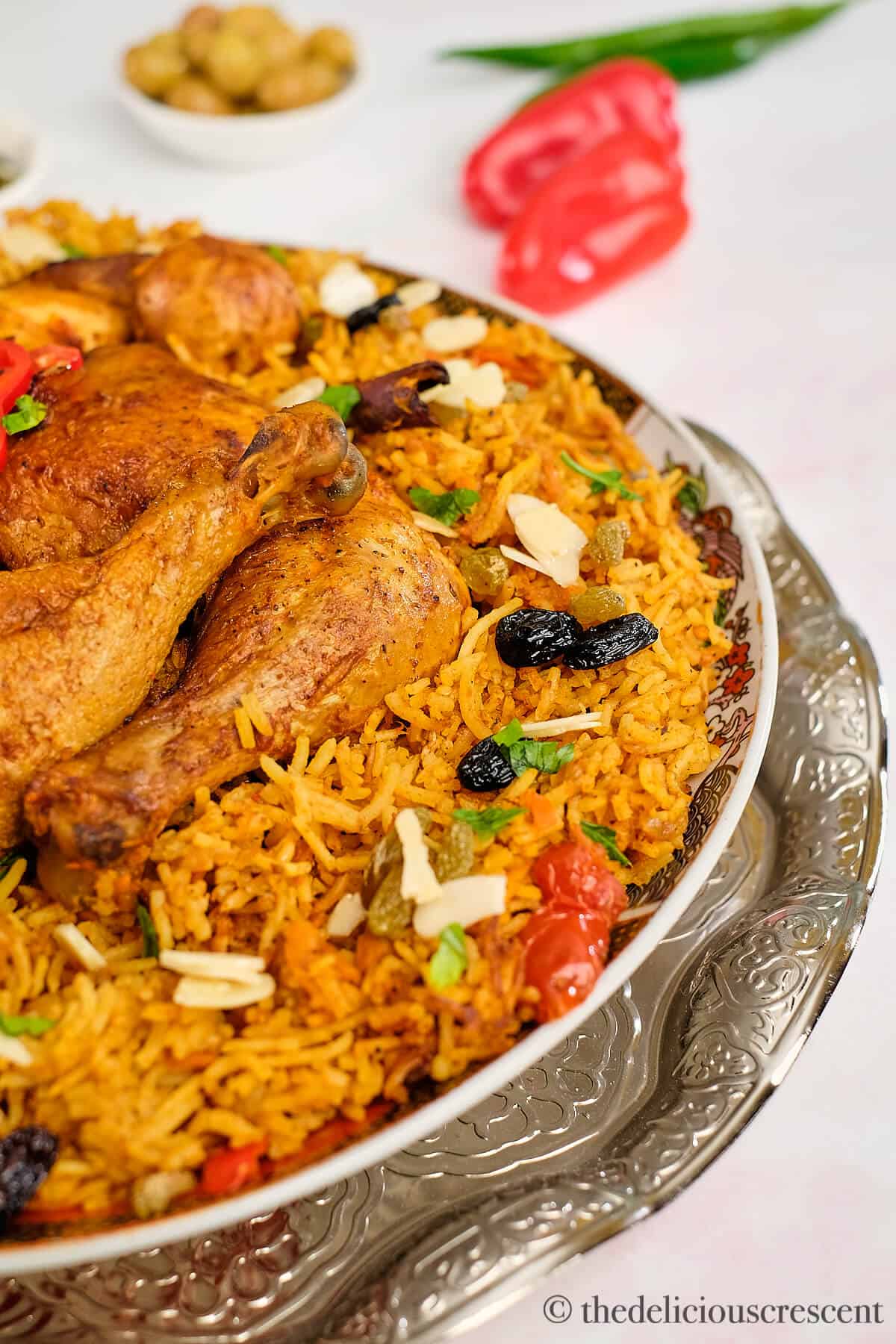
What is Kabsa?
Kabsa, a captivating one-pot rice dish, is known as the national dish of Saudi Arabia. It is a delicious recipe that balances exotic spices, succulent chicken, and aromatic rice, like our zereshk polo (barberry rice with chicken), chicken biryani and saffron rice with chicken.
In other parts of the Arabian peninsula, kabsa is also knows as machboos. The techniques of this chicken and rice dish seem to have originated in Yemen. And in Arabic, the word “kabsa” or “machboos” means “pressed”, which alludes to the way it is cooked all together in one pot.
This is a culinary masterpiece that is easy to make and also looks festive. The fluffy rice takes on bright colors from the tomatoes and carrots, while getting perfectly flavored with fragrant spices. The chicken is first cooked until tender and then nicely browned on the top, resulting in a nice combination of textures and flavors.
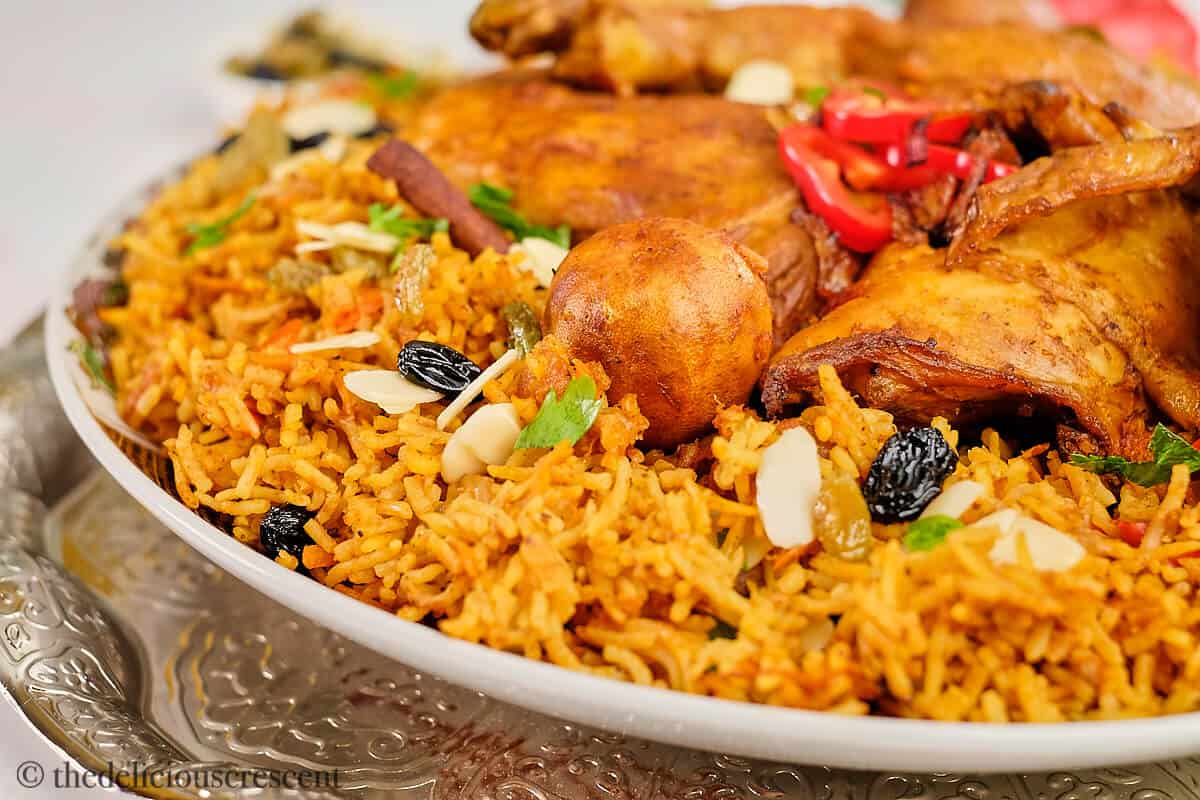
Every bite of this sumptuous feast is so achievable using readily available ingredients and minimal equipment. The rich flavor profile also has a wide appeal. So this recipe is great for a show stopping menu item for your next feast or weeknight dinner.
Further, it is a dish that reflects the warmth and generosity of Arabian hospitality, inviting you to experience a celebration of flavors, aromas, and textures. In recent times, its popularity has spread, so it’s enjoyed as much by the locals and people outside of Saudi Arabia.
You can make chicken kabsa on stove top, in the oven, or use stove and oven. This can also be made in instant pot or slow cooker.
Recipe Ingredient Notes
Here are some notes about the ingredients and substitutes.
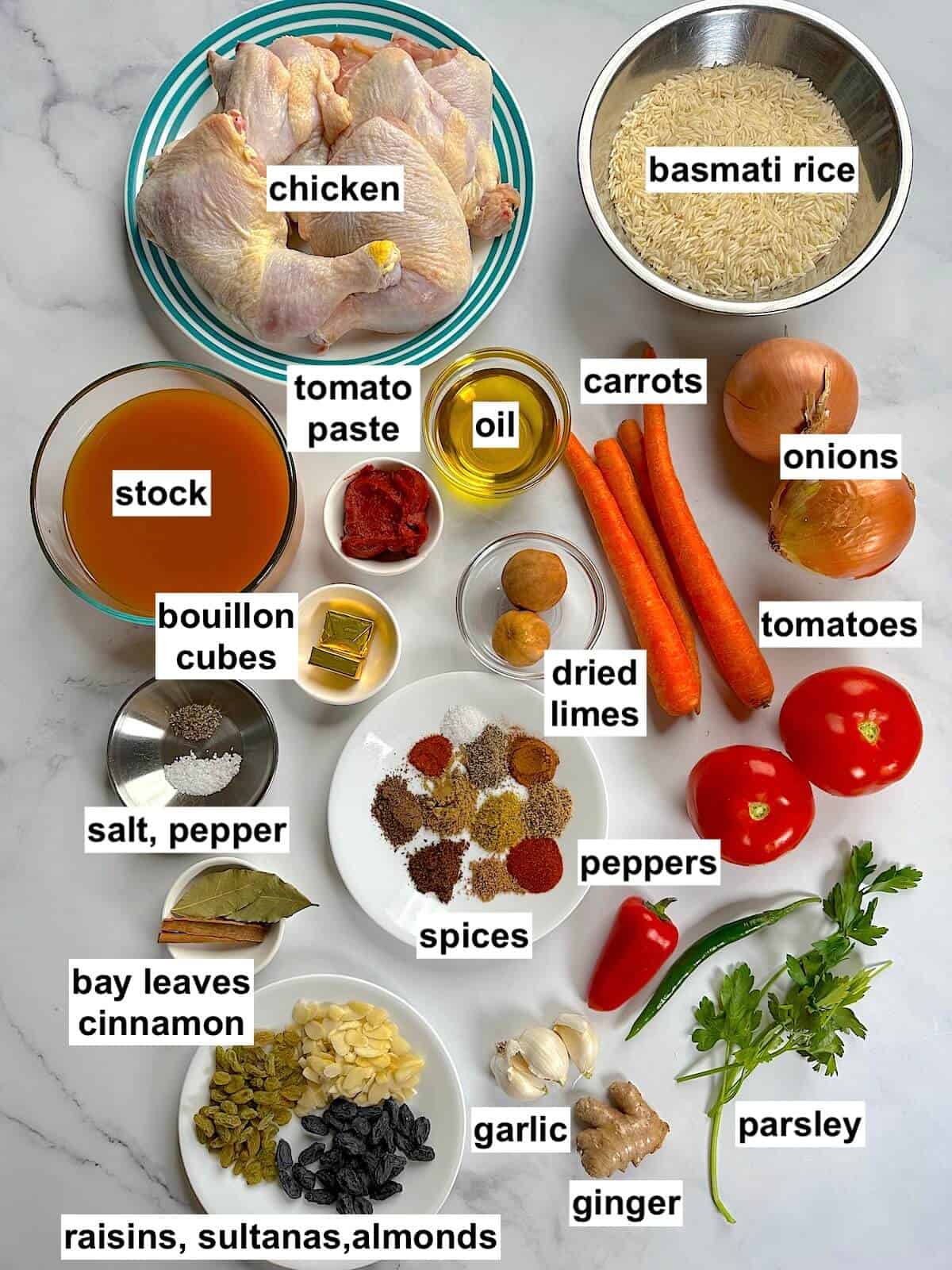
- Cooking fat: Use good-quality olive oil for searing the chicken. Drizzle some ghee in the end for more flavor.
- Chicken: Opt for bone-in, skin-on chicken such as leg quarters or a whole chicken cut into large 4-6 pieces. This choice ensures moist and succulent meat, while the skin adds a delightful crispness and flavor. Traditionally chicken or lamb has been used, but beef, goat, veal or seafood are other options. Just make sure to adjust cooking times.
- Yellow Onions, Garlic and Ginger: For aromatics.
- Cinnamon Sticks and Bay Leaves: To add warm and earthy undertones.
- Green and Red Chili Peppers (or Bell Peppers): For milder heat, remove the seeds from the chili peppers. Red peppers can be used as an alternative to add color and flavor.
- Chopped Tomatoes and Tomato Paste: These tomato-based ingredients provide a tangy and slightly sweet flavor. Tomato paste is a concentrated version with intense tomato flavor.
- Kabsa Spice Mix: This homemade blend of spices, including cinnamon, black pepper, saffron (or turmeric), cardamom, allspice, coriander, cumin, paprika, cloves, and nutmeg, is the heart of the kabsa's distinctive flavor. You can also use a store bought spice blend or try homemade baharat spice .
- Carrots: Grated or shredded carrots add a subtle sweetness, vibrant color and a pleasant texture.
- Chicken Stock/Broth: Use chicken stock, broth, or dissolve chicken bouillon cubes in water as a flavorful base for cooking the rice. Adjust the salt content accordingly, as some stocks and bouillon cubes may already contain salt.
- Dried Limes: Pierced dried limes or dried lime powder are traditional ingredients in kabsa. They impart a tangy and slightly bitter flavor. The black dried limes which were developed in Oman give this dish an interesting taste, but Persian dried limes from middle eastern stores will also work.
- Basmati Rice: This long-grain rice variety is the preferred choice. Known for its fragrant aroma and fluffy texture, it pairs well with chicken and spices.
- Parsley (Optional): Use as a garnish to add a fresh flavor and a pop of color.
- Garnish: Top it with almonds, raisins, and sultanas, to add visual appeal. This combination creates a delightful contrast in taste and texture. Almonds add a crunch and nutty flavor. Plump raisins and sultanas add a burst of natural sweetness, chewy texture and a touch of fruity flavor.
Sella Basmati Rice (alternative)
Some kabsa recipes use sella basmati rice, which has been parboiled and partially cooked before being milled. It has a firmer texture and is less prone to overcooking or becoming mushy. Check below under “recipe FAQs” for more information on how to use it.
How To Make Chicken Kabsa
**Brief overview below. Full recipe is at the end of the post.
- Combine Kabsa spices and set aside. Cook almonds, raisins, and sultanas until golden brown.

- Sauté sliced onions until golden brown, drain and transfer to a plate.

- Sear chicken on both sides until golden brown and transfer to the plate.

- Return cooked onions to the pot. Add garlic, ginger, cinnamon sticks, bay leaves and cook until aromatic.

- Add chopped tomatoes, tomato paste, Kabsa spice mix and cook until fragrant.

- Add carrots, stock, dried limes, seared chicken, salt and simmer. Remove partially cooked chicken to a plate. Scoop out some tomato oil and set aside.

- Stir rice into the dish, arrange chicken back on top, and simmer for 20 minutes.

- Uncover, brush chicken with tomato oil, and bake until golden brown. Garnish with almonds, raisins, sultanas, and parsley.

Top Tips
Use a wide casserole dish or dutch oven: Opt for a wide and sturdy 4 quart cooking vessel to ensure even heat distribution and ample space for searing the chicken and cooking the rice. This will help prevent overcrowding and promote proper browning. Or use a shallow and wide baking dish with foil on top.
Pat dry the chicken: Moisture on the chicken skin can hinder browning. Pat dry the chicken pieces thoroughly using paper towels before seasoning and searing them. This will create a nice crispy skin and enhance the overall presentation.
Cooking Rice: Rinse the basmati rice thoroughly to remove excess starch, so that the grains don't cling together and the rice will be fluffy. While simmering the dish, keep an eye on the moisture level of the rice. If the rice appears too dry, add a little more chicken stock or water.
Optional browning methods: If you want an extra crispy and golden-brown chicken skin, consider browning the chicken separately by grilling, broiling, frying, or baking it before placing it back on top of the rice. This step will add an enticing texture to your dish.
Let it rest: After baking, allow the chicken kabsa to rest for a few minutes before serving. This resting period allows the flavors to meld together and ensures that the rice absorbs any remaining moisture, resulting in a more cohesive and flavorful dish.
How To Serve
Here are some suggestions on how to serve this delicious dish.
- Traditional Style: Serve Kabsa on a large platter with the aromatic rice as the base. Arrange the browned chicken pieces on top of the rice and garnish it with fried onions, almonds, raisins, sultanas, and chopped parsley. You can also top it off with boiled egg halves.
- Accompaniments: Chicken kabsa is a complete meal but you can add a salad such as cucumber salad or onion salad for more veggies. Add a side of yogurt or a yogurt-based salad such as mast-o-musir to balance the spices. Warm pita bread, tangy pickles, shatta sauce are other excellent accompaniments.
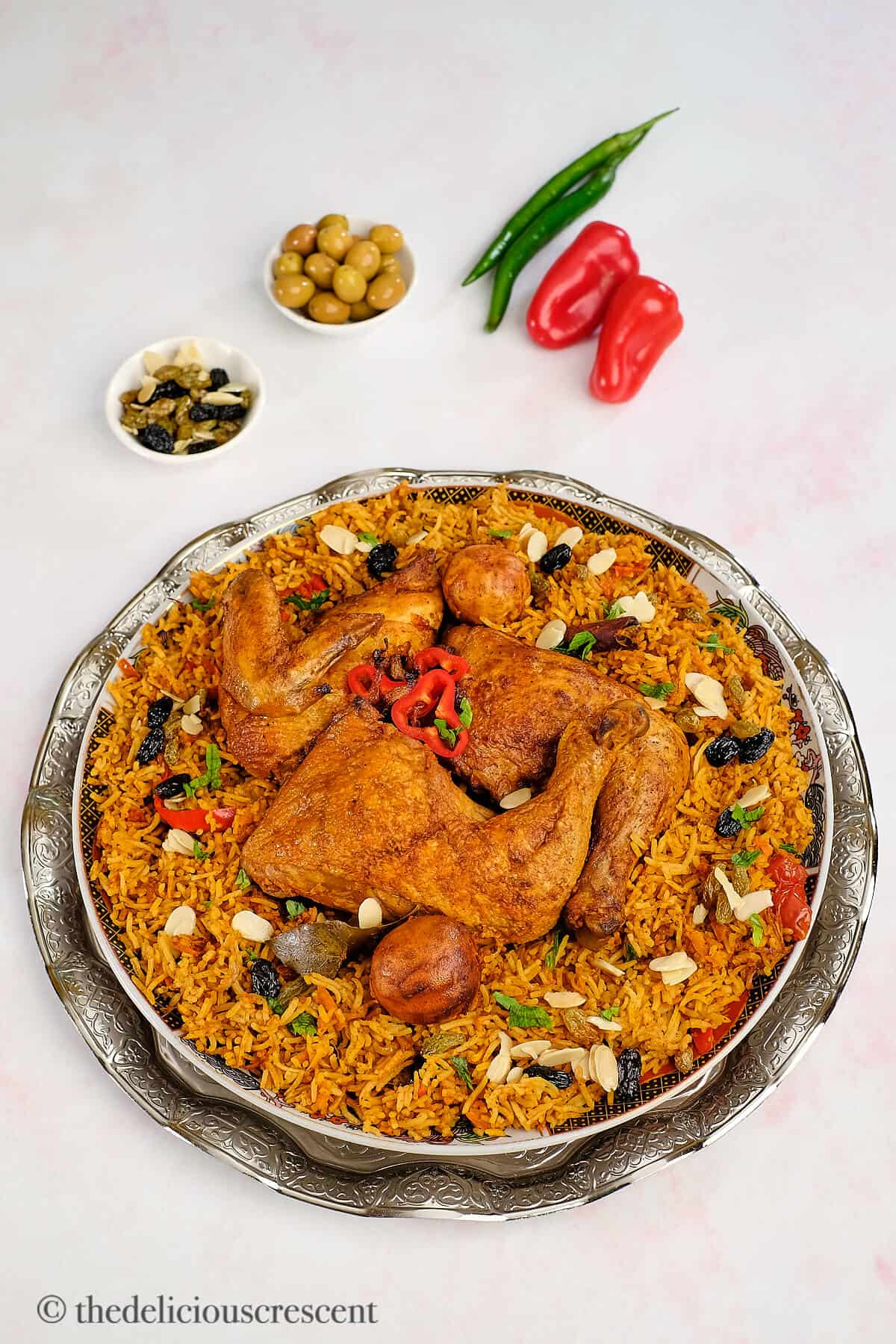
Variations
Kabsa is gluten free, dairy free, high protein and soy free. Here are some variations you can try.
- Vegan Kabsa: Replace the chicken with plant-based protein alternatives like tofu or tempeh. Use vegetable stock instead of chicken stock and add a variety of vegetables such as shiitake mushrooms to make it heartier.
- Vegetable Kabsa: Add vegetables such as bell peppers, carrots, peas, and zucchini. Sauté the vegetables along with the onions and spices, or roast them separately and mix them into the cooked rice and chicken.
- Lower Carb Kabsa: Replace the rice with cauliflower rice or broccoli rice, reduce the amount of tomatoes and skip the dried fruit.
- Herb-infused Kabsa: Top with chopped fresh parsley, cilantro, or mint to add a vibrant herbal note.
- Low-Sodium Kabsa: Opt for low-sodium chicken stock or broth. Reduce the amount of salt and use salt more herbs and spices to enhance the flavor.
- Other Ideas: You can make kabsa rice bowls with fresh greens, roasted vegetables, and a drizzle of yogurt or tahini sauce. Or make stuffed peppers, by filling them with rice and chicken mixture and bake until the peppers are tender.
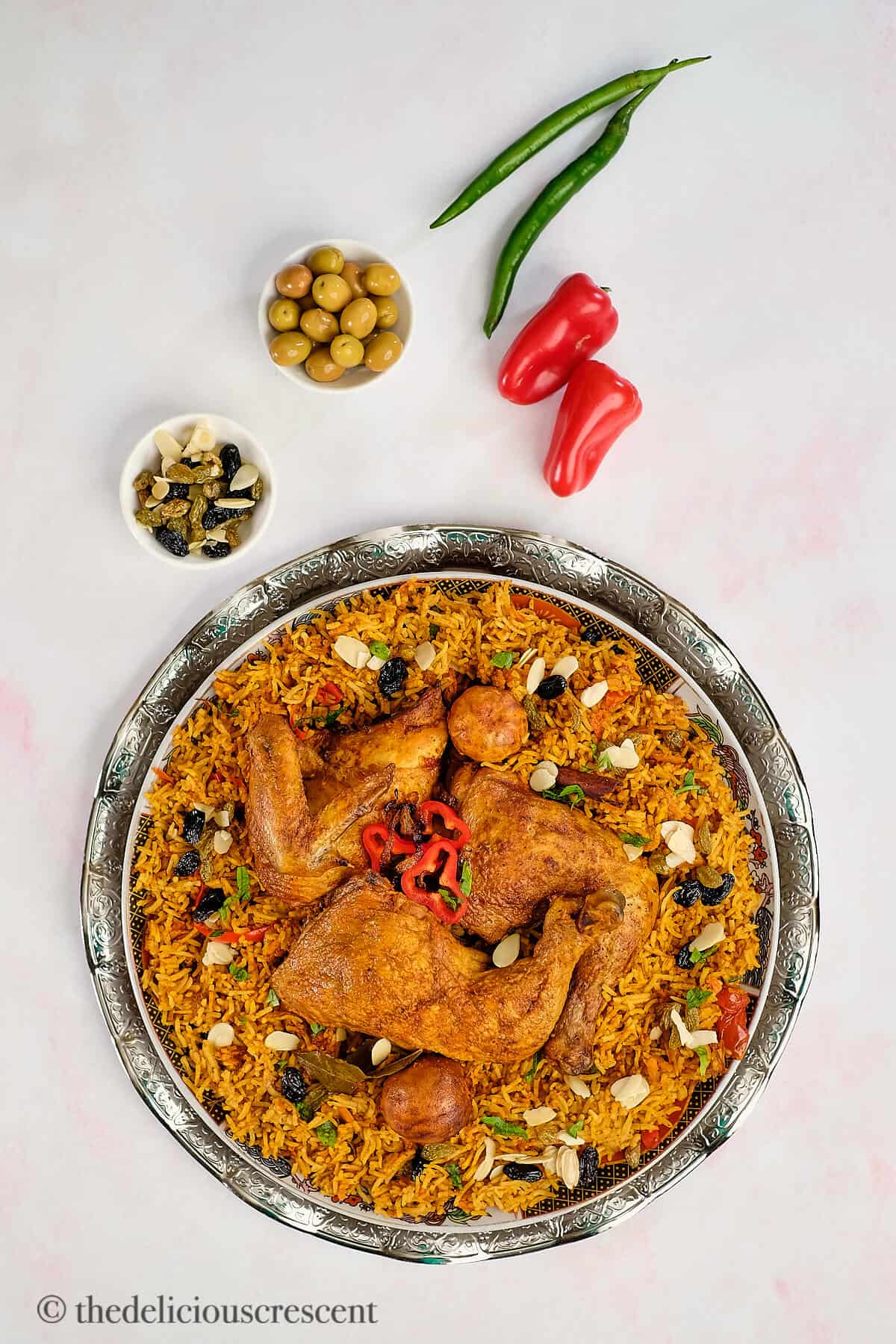
Meal Prep
Prep some of the ingredients ahead such as the spice blend, dried fruit/nuts, vegetables etc. You can also cook the chicken half the way through and refrigerate the day ahead. Cook with rice the next day.
Storage
Refrigerate leftovers in sealed containers for 3 to 4 days. You can freeze kabsa for 2 to 3 months in airtight freezer-safe containers. If you have made a large batch, consider freezing individual portions. Thaw and reheat in microwave for quick meals.
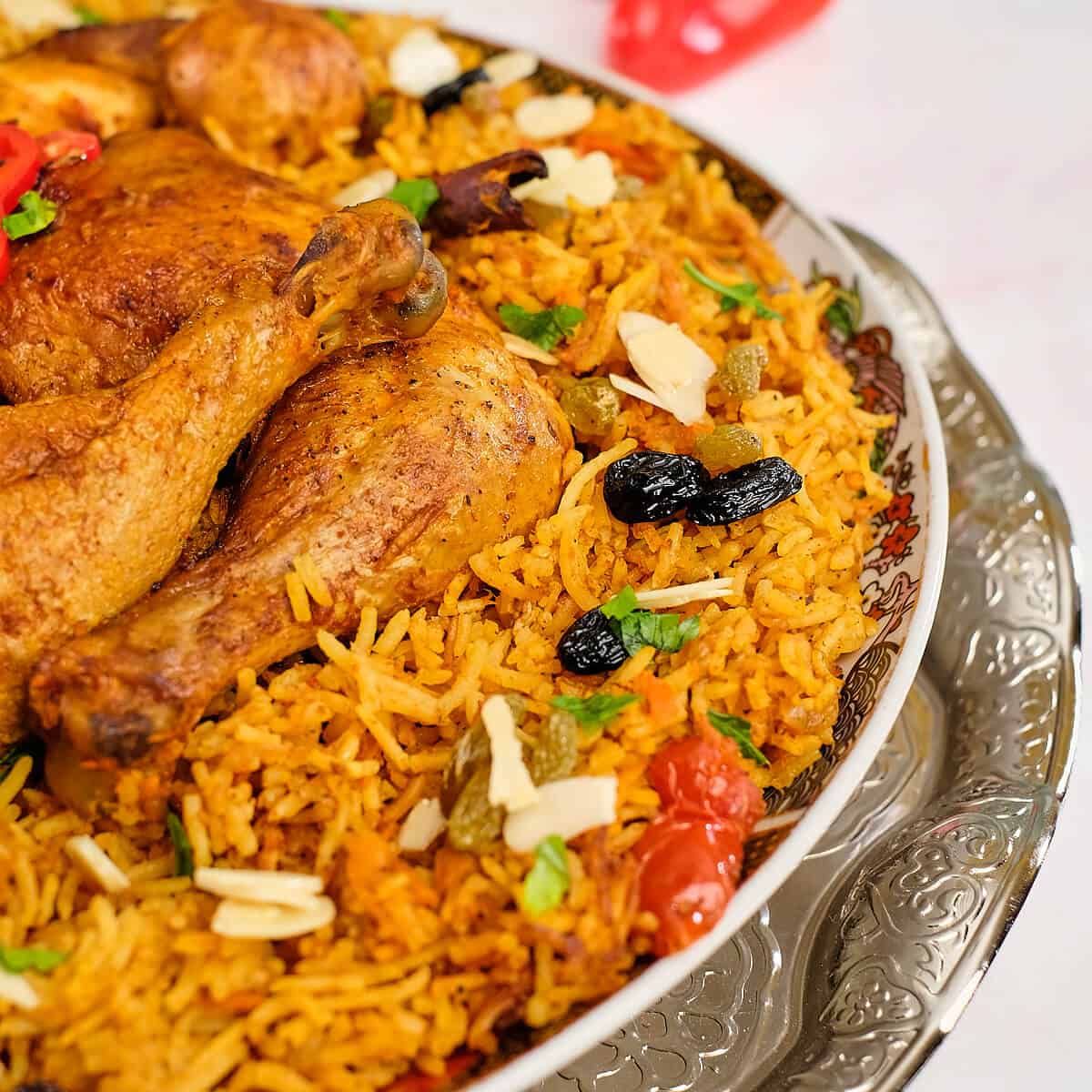
Recipe FAQs
While bone-in, skin-on chicken is traditionally used for its added flavor, you can use boneless chicken pieces if you prefer. Just keep in mind that boneless cuts may cook faster, so adjust the cooking time accordingly.
Basmati rice is recommended for its aromatic and long-grain texture, which pairs well with the flavors of Kabsa. However, you can substitute it with other long-grain rice varieties if needed. Adjust the cooking time and liquid amount according to the instructions on the rice packaging.
Dried limes add a unique tangy flavor to the dish, but if you can't find them, you can substitute them with fresh limes. Use the juice and zest of a couple of limes to infuse the dish with a citrusy note.
Yes you can make it in a crock pot or instant pot. Just adjust the recipe cooking times accordingly.
Rinse the sella basmati rice to remove any residual starch to ensure the grains remain separate and fluffy. Follow the cooking time and water-to-rice ratio instructions on the packaging for the specific brand of rice you're using. Once cooked, fluff the rice gently with a fork to separate the grains.
More Chicken Recipes
- Musakhan (Sumac Chicken Flatbread)
- Saffron Chicken
- Braised Chicken With Tomatoes
- Zucchini Stew With Chicken (Khoresht Kadoo)
- Persian Chicken Potato Salad (Salad Olivieh)
★ DID YOU MAKE THIS RECIPE? PLEASE COMMENT AND GIVE IT A STAR RATING BELOW!
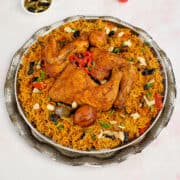
Chicken Kabsa (Arabian Chicken and Rice)
Ingredients
Kabsa Spice Mix
- ½ teaspoon ground cinnamon
- ½ teaspoon black pepper
- ½ teaspoon saffron or turmeric
- ½ teaspoon ground cardamom
- ½ teaspoon allspice
- ½ teaspoon ground coriander
- ½ teaspoon ground cumin
- ½ teaspoon paprika
- ¼ teaspoon ground cloves
- ⅛ teaspoon nutmeg
Garnish
- ¼ cup almonds sliced or slivered
- ¼ cup raisins
- ¼ cup sultanas
Chicken and Rice
- ¼ cup olive oil
- 3 lbs chicken bone-in, skin-on, leg quarters or whole chicken cut into 4-6 pieces
- 1¼ teaspoons salt adjust to taste
- ½ teaspoon black pepper
- 2 large yellow onions finely sliced or chopped
- 5 garlic cloves grated
- 1 teaspoon grated ginger
- 2 cinnamon sticks
- 2 bay leaves dried
- 2 green chili peppers seeds removed for milder heat
- 2 red chili peppers or bell peppers
- 2 cups chopped tomatoes
- 2 tablespoons tomato paste or ¼ cup tomato sauce
- 1½ tablespoons Kabsa spice mix prepared earlier
- 3 carrots grated or shredded, 150g
- 4 cups chicken stock broth, or 2 chicken bouillon cubes plus water (adjust salt)
- 2 dried limes pierced or 2 teaspoons dried lime powder
- 2 cups basmati rice rinsed
- Parsley optional
- 1 tablespoon ghee or butter, optional
Equipment
- Casserole Dish
- Dutch Oven
- Slotted Spoon
- Grater
- Baking Dish
- Serving Platter
Instructions
- In a small bowl, combine all the Kabsa spices and set aside.
- Heat olive oil in a wide dutch oven over medium-high heat until shimmering. Add almonds, raisins, and sultanas, and cook until golden brown, for about 3 minutes. Using a slotted spoon, transfer them to a plate and set aside.
- Add the sliced onions to the same dish and sauté until they turn golden brown, stirring often, for about 10 minutes. Using a slotted spoon drain the onions and transfer to the plate.
- Pat dry the chicken pieces and season with ½ teaspoon salt and ½ teaspoon pepper.
- In the same dutch oven, place the chicken pieces skin-side down. Sear both sides over high heat until golden brown, flipping them in between. This process should take about 3 minutes per side. Transfer the chicken to a plate.
- Return the cooked onions to the dish and add grated garlic, ginger, cinnamon sticks, and bay leaves. Cook until aromatic, approximately 1 minute.
- Add chopped tomatoes, tomato paste, and the prepared Kabsa spice mix to the dish. Cook until fragrant, stirring occasionally for about 2 minutes.
- Add grated carrots, chicken stock, dried lime, the seared chicken, and ¾ teaspoon salt. Raise the heat until the mixture bubbles, then reduce the heat, cover the dish, and let it simmer for 25 minutes on the stovetop or in a preheated oven at 350°F (175°C).
- Scoop out 2 tablespoons of the tomato oil from the top and set it aside in a small bowl. Remove the partially cooked chicken from the dish and transfer it to a plate.
- Stir the rice into the dish, then arrange the chicken on top. Raise the heat until the mixture bubbles, then reduce the heat, cover the dish, and simmer for an additional 20 minutes on the stovetop or in the preheated oven at 350°F (175°C).
- Remove the lid, give the rice a gentle stir, and arrange the chicken back on top. Brush the chicken with the reserved tomato oil. Bake the dish uncovered, for an additional 20 minutes until the chicken turns golden brown on top. Alternatively, you can brown the chicken separately by broiling, frying, or baking it until it becomes golden and crisp.
- Remove from oven, uncover and Let it rest 10 minutes. Then Garnish with fried onions, almonds, raisins, sultanas, chopped parsley and drizzle ghee. Top it with boiled egg halves, if you prefer.
Notes
- Kabsa Spice Mix: Use the homemade Kabsa spice mix or try a store-bought Kabsa spice blend or baharat as a substitute.
- Chicken Cuts: The bone-in and skin-on chicken works the best for this recipe. Boneless chicken cuts may cook faster, so adjust the cooking time accordingly.
- Dried Limes: If you can't find dried limes, use dried lime powder o lime juice as a substitute.
- Sella Basmati Rice: While traditional Kabsa is made with regular basmati rice, some recipes use sella basmati rice, which is parboiled before being milled. It has a firmer texture and is less prone to overcooking or becoming mushy. If you prefer using sella rice, adjust the cooking time and water quantity according to the package instructions.
- Storage: Refrigerate leftovers in an airtight container for up to 3 days. To reheat, gently warm it in a pan or microwave, adding a splash of water or broth to prevent it from drying out. You can freeze kabsa for 2 to 3 months in freezer-safe containers.
- For more information on ingredients, variations, recipe FAQs and serving suggestions, scroll up the page to the blog post.


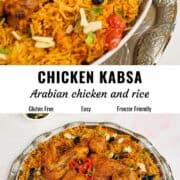
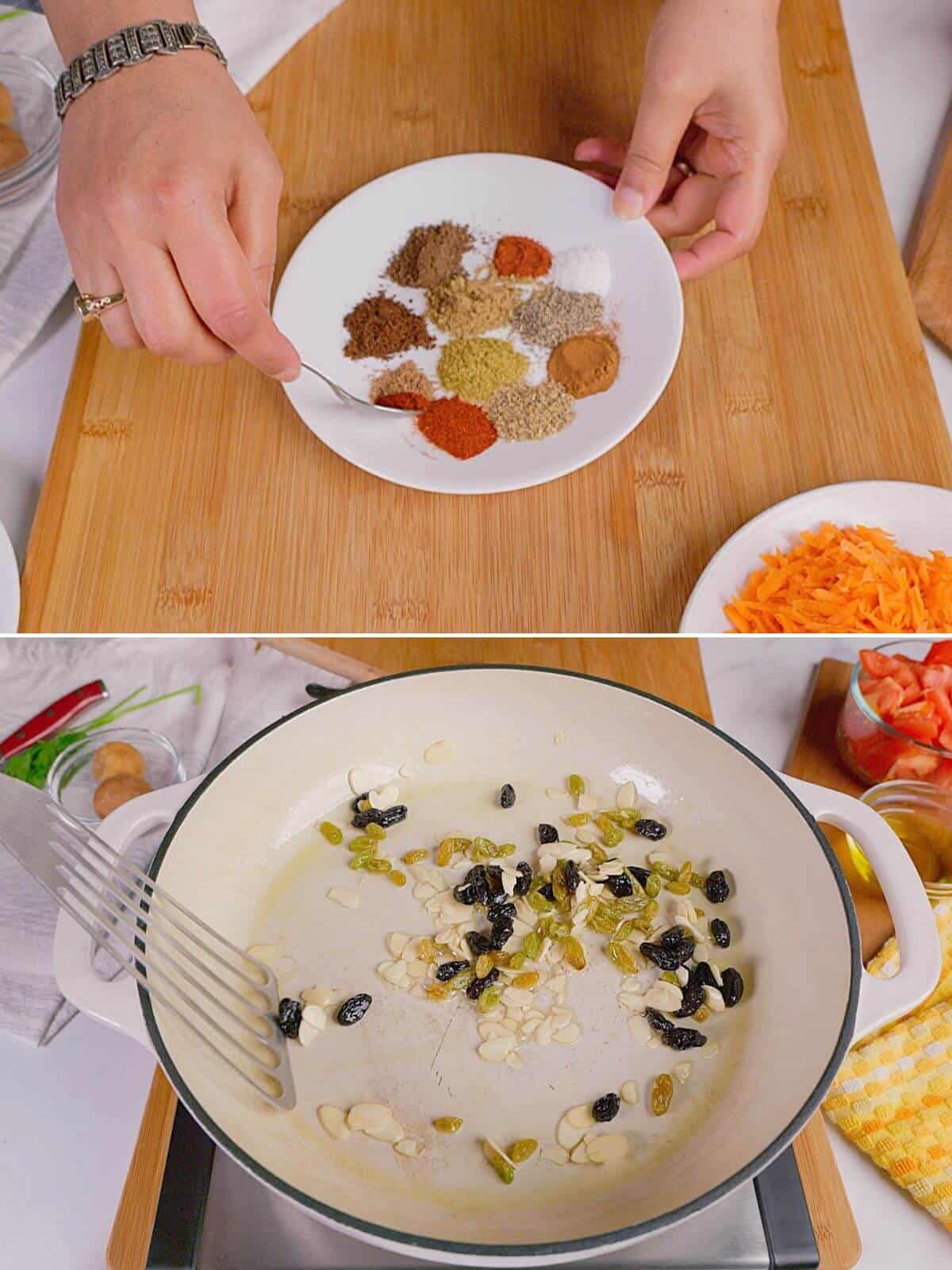
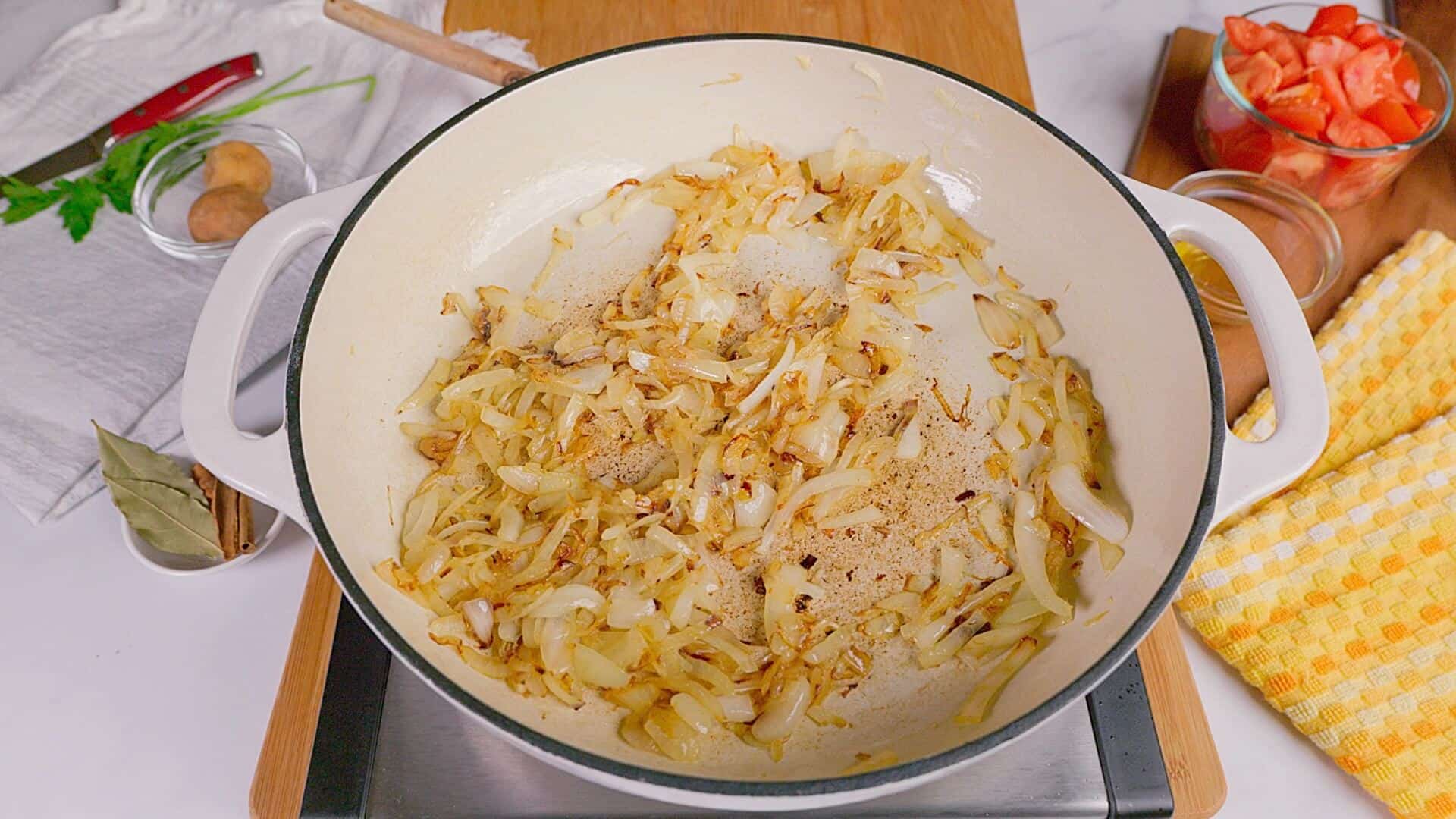
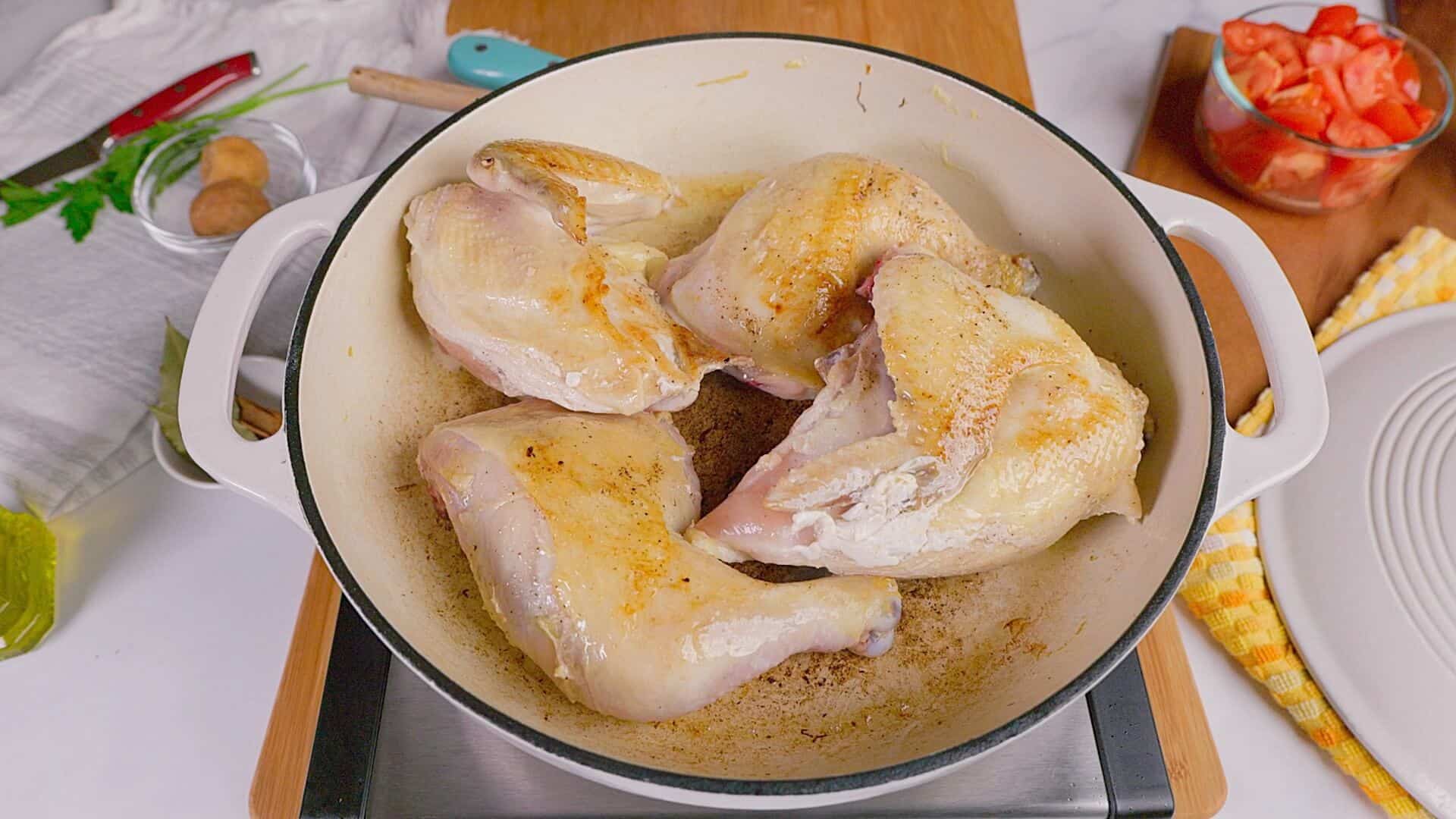
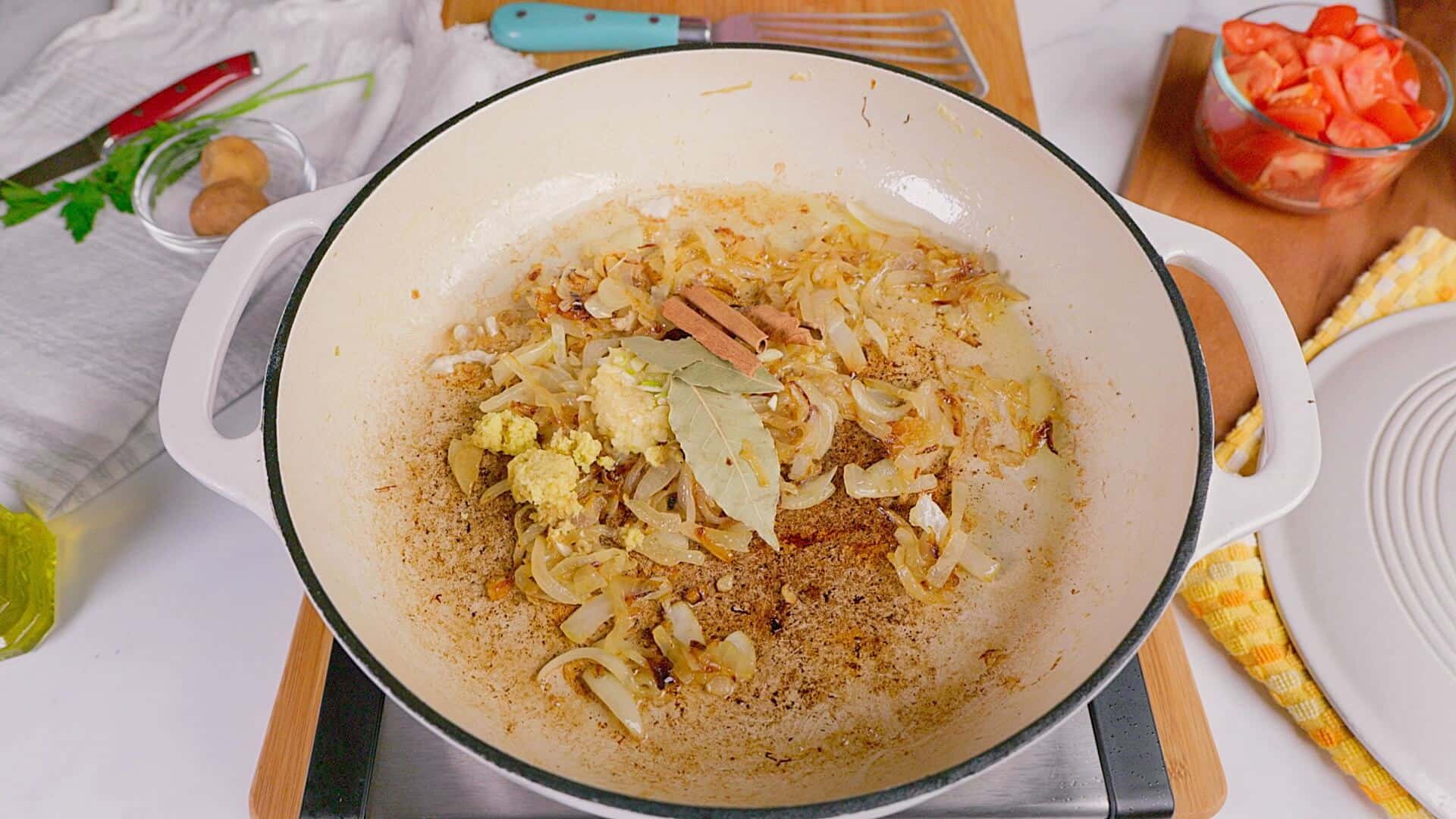
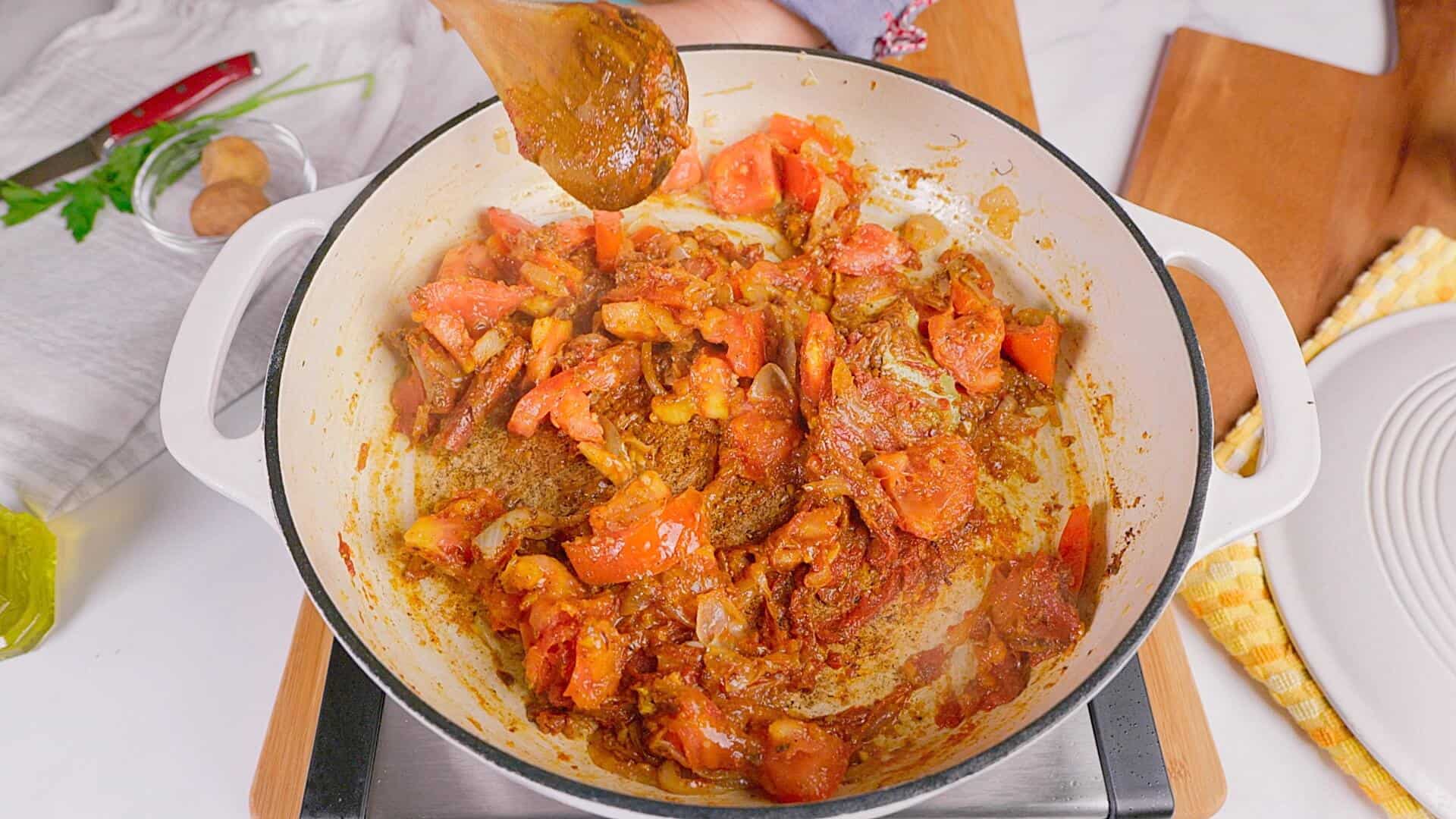
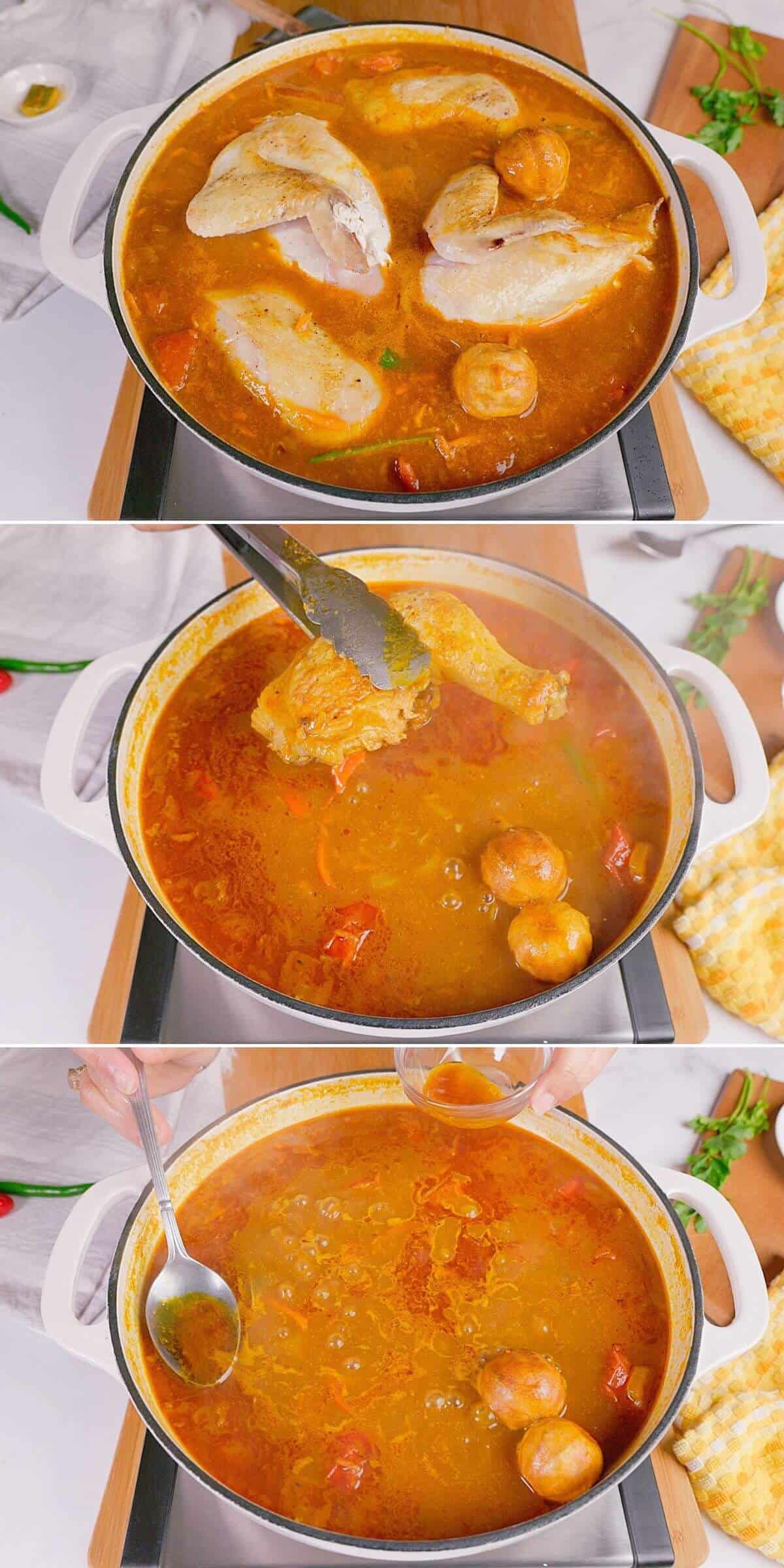
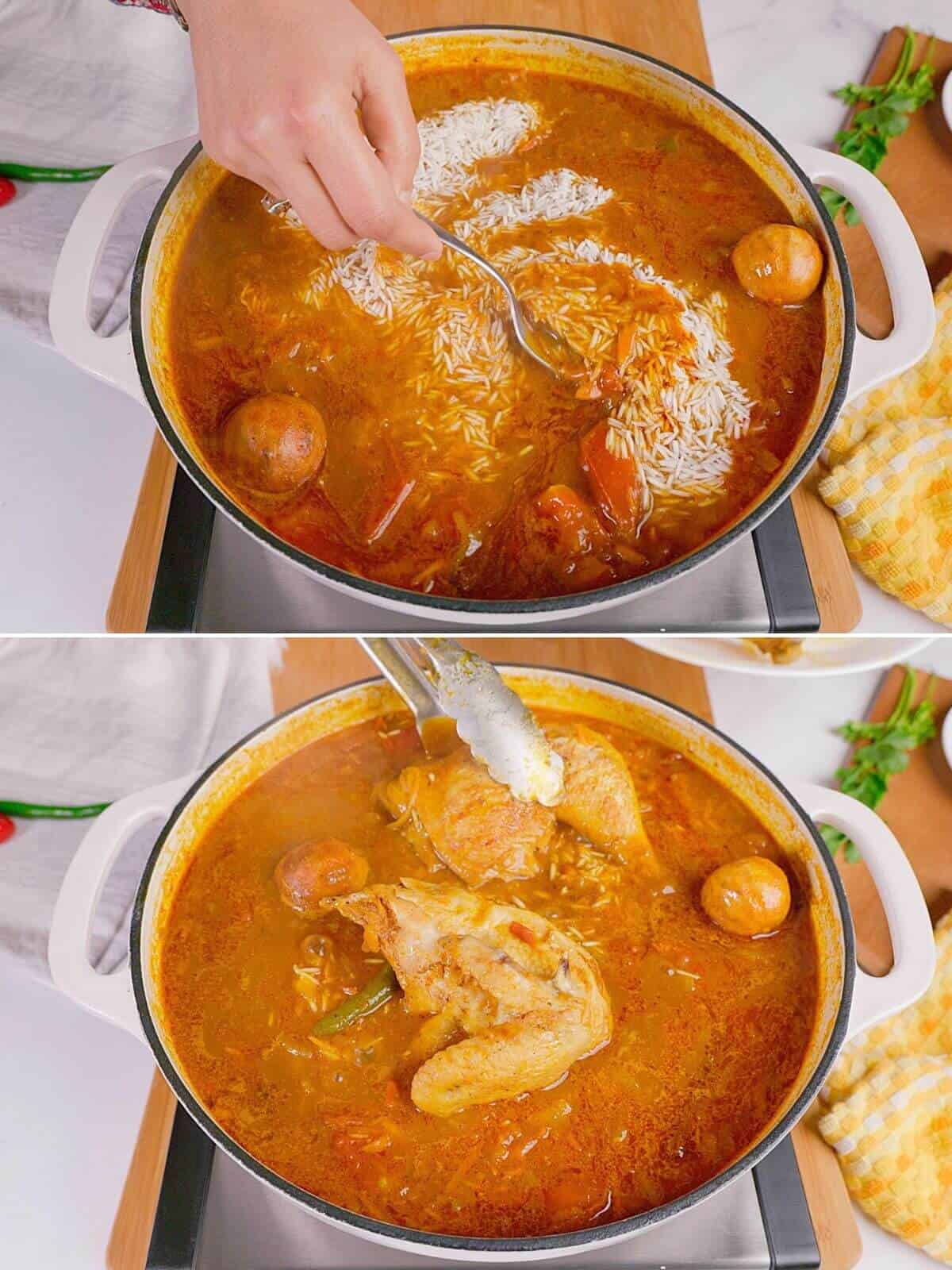
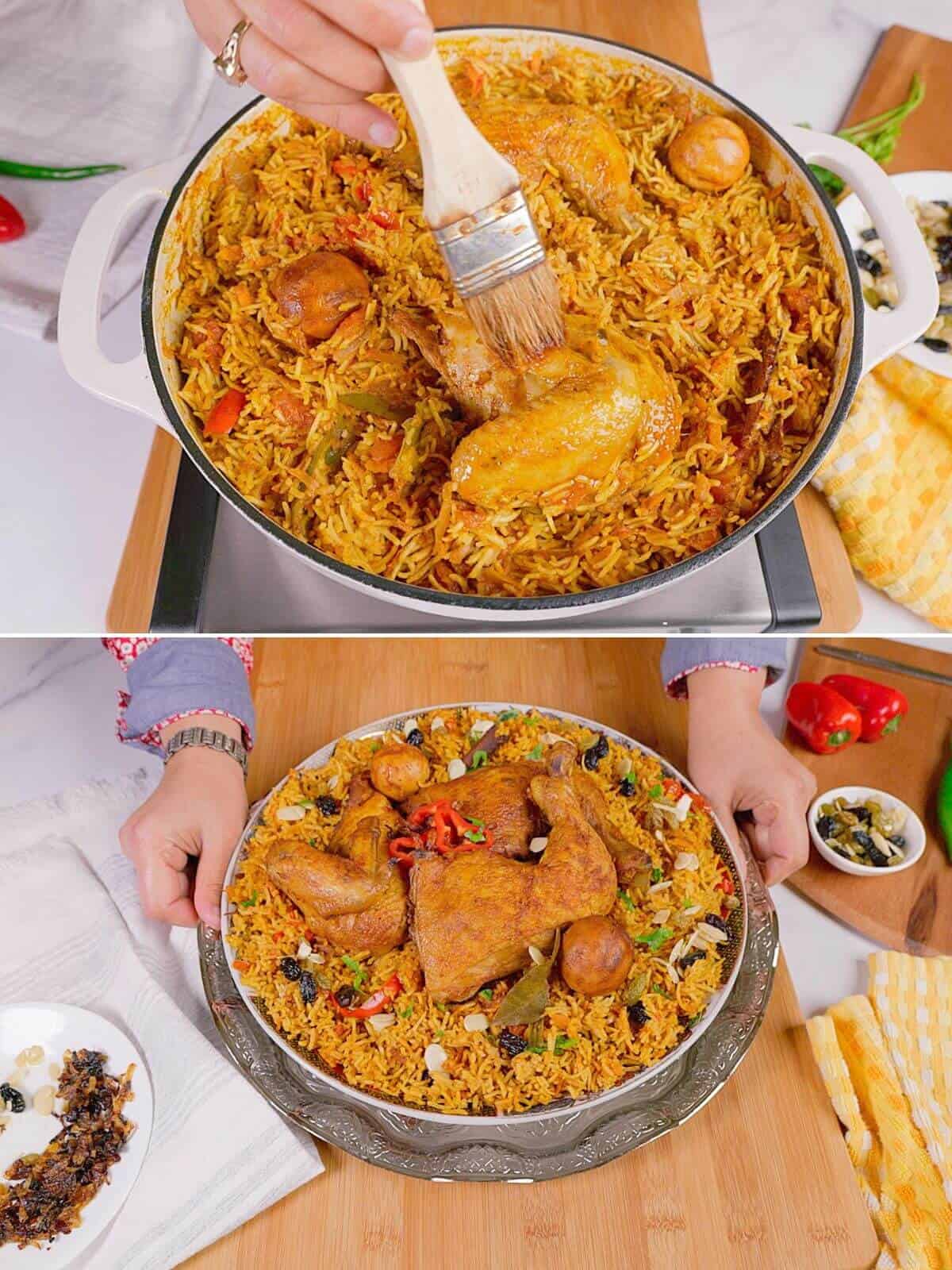
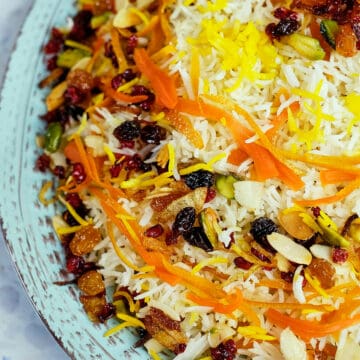
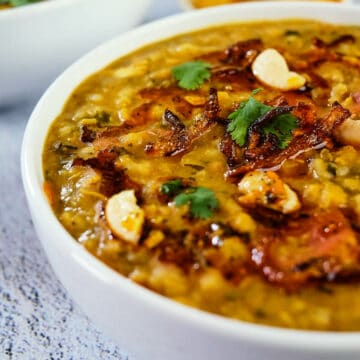
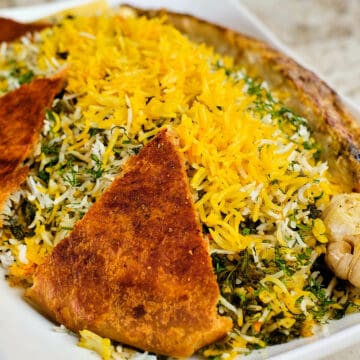
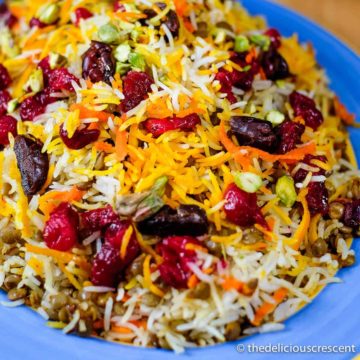
Leave a Comment